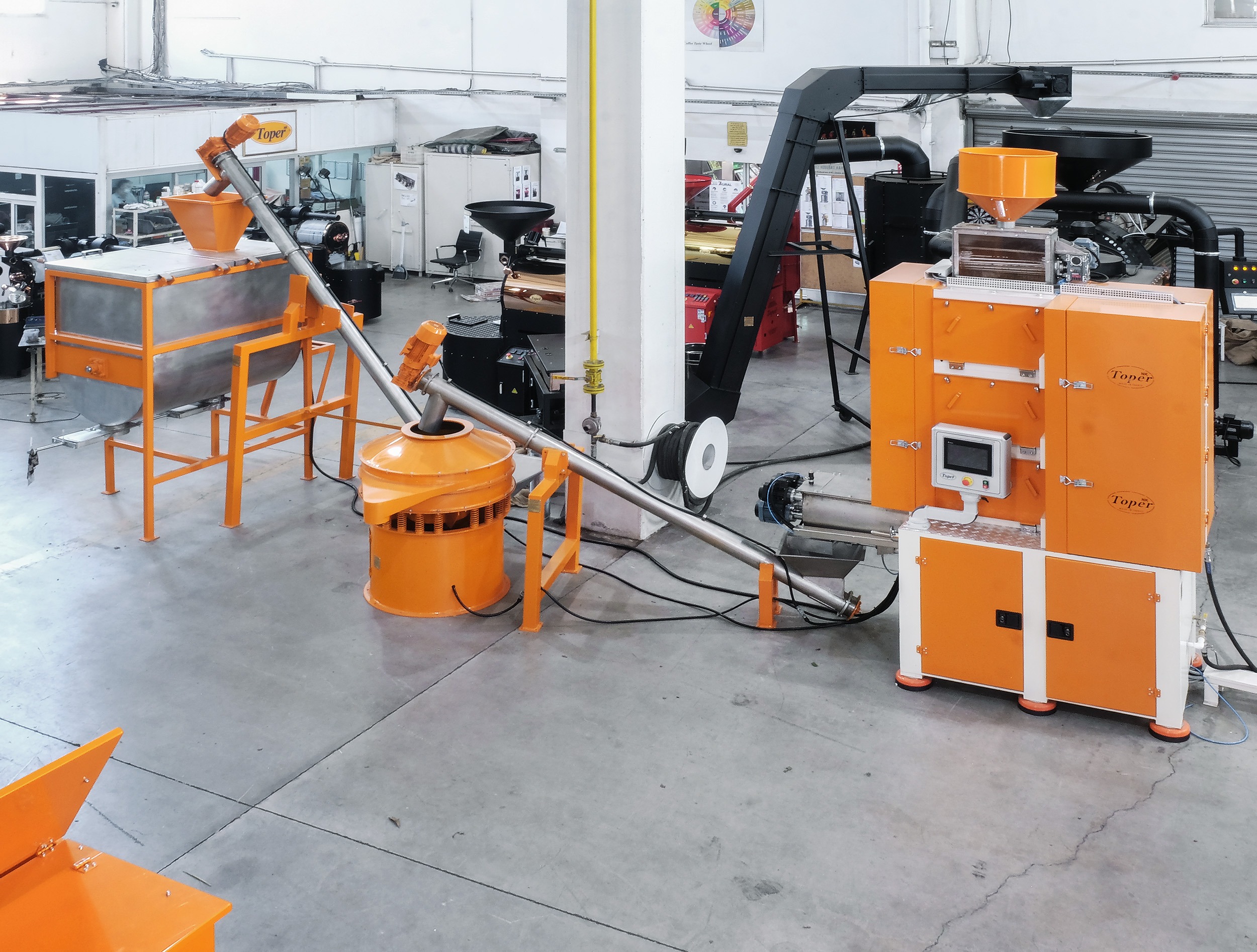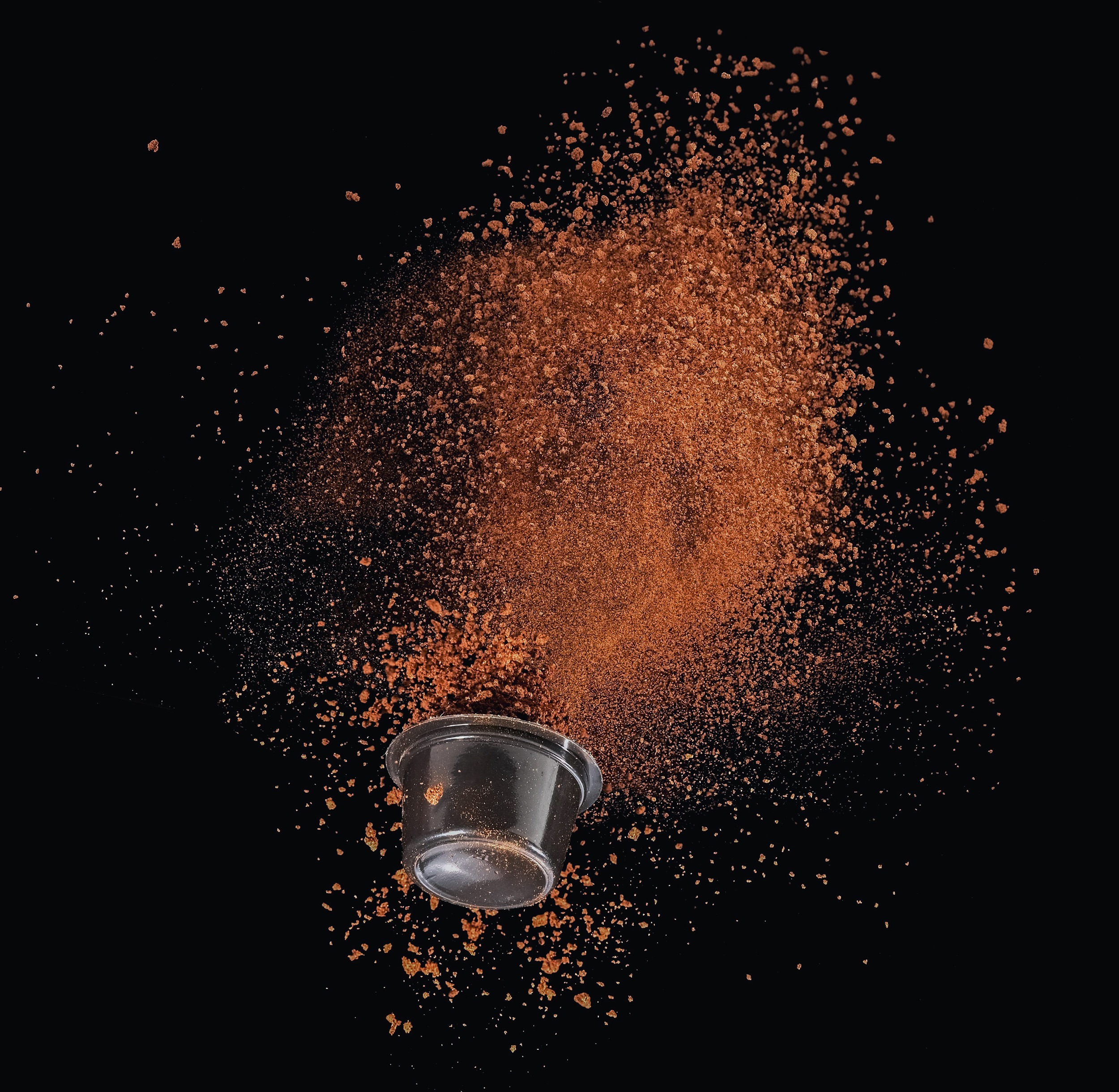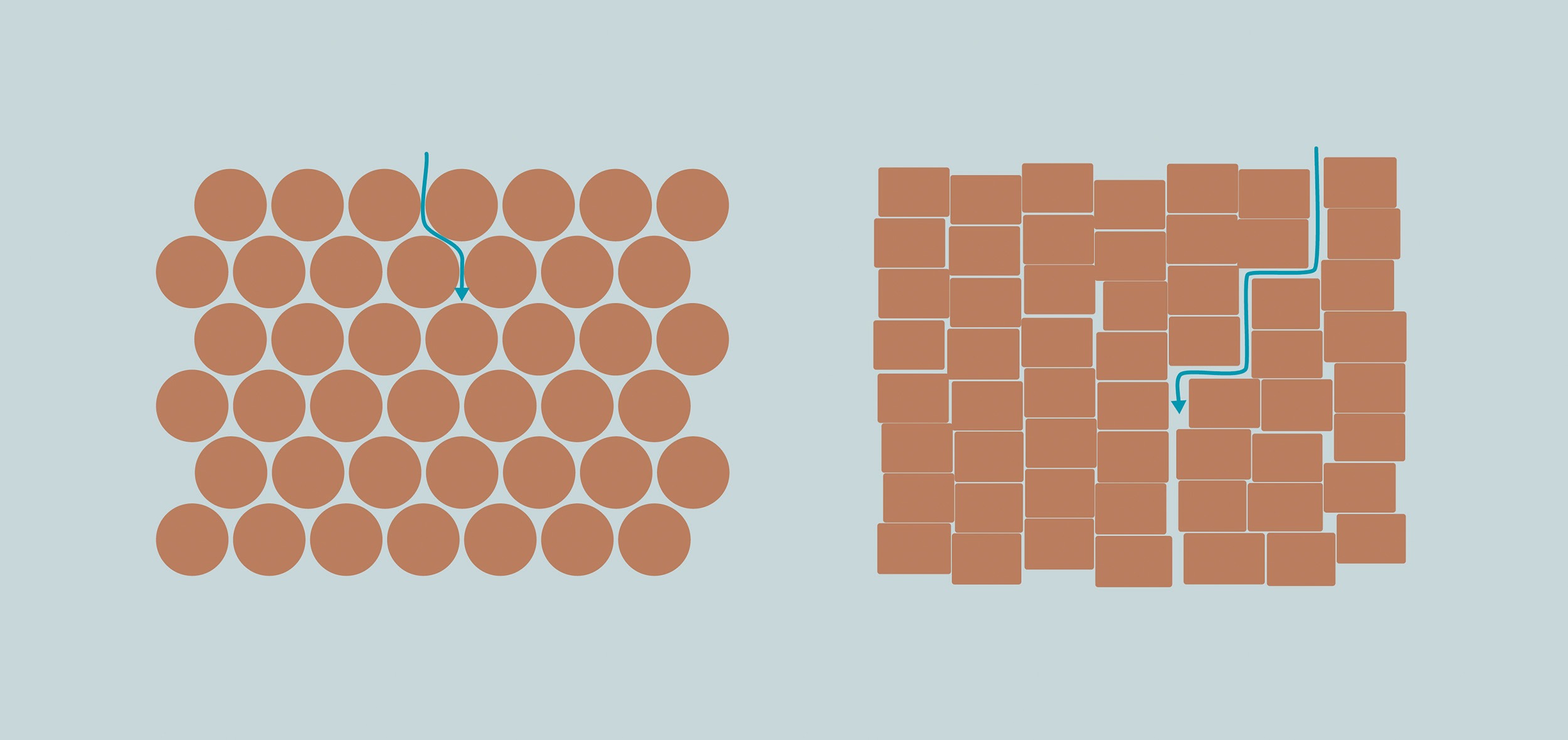A couple of weeks ago, coffee influencer Lance Hedrick released a pair of videos with the potential to radically shake up the way that we make our espresso. According to Lance’s testing, shaking the coffee grounds for a few seconds before pouring them into the portafilter greatly increases extraction.
In fact, shaking the coffee grounds massively outperformed the other distribution methods Lance tested, which included side-tapping, stirring with a classic WDT tool, and even the distribution method of choice for the last two WBC Champions, the Autocomb. Most intriguing of all, shaking boosted extraction while simultaneously reducing shot time, so the method could let us grind finer without clogging, potentially raising the extraction ceiling further than ever before.
We’re always keen to try anything that can improve the way we brew coffee, so during the last two weeks we’ve been exploring this method and trying to understand — with the help of experts in coffee and particle science — exactly how this method works so well.
What’s Shaking?
The method Lance tested is simple: grind your coffee into a lidded cup, shake it for five seconds, and then pour the grounds into a portafilter. We encourage you to watch Lance’s videos for the full details, but the method really is that straightforward.
The results, however, were dramatic. Shaking resulted in the most consistent shot time, and in slightly faster shots compared to tapping or conventional WDT. It greatly reduced the variation in extraction between shots, and increased the extraction by as much as 1.5 percentage points. More consistent, higher extractions? Sign us up!
Lance performed the tests with Weber Workshops’s Blind Shaker, which naturally sold out almost immediately after the videos were released. We expect that other grounds containers, or even a plain old cocktail shaker, could have the same effect, but the Blind Shaker’s design makes it a pleasure to use, if you can get your hands on one.
Douglas Weber, the founder of Weber Workshops, says that they started out by simply aggressively stirring their coffee grounds in the Blind Tumbler with a chopstick before dropping them into the portafilter. ‘We knew this had an impact on espresso that manifested itself in reduced channelling and statistically higher measured TDS,’ he says. ‘Adding the lid was an attempt to simplify that process. The showmanship aspect of the shaker (the name is admittedly lifted straight from the cocktail world) was also just more fun.’
Take Control of Your Density
We can’t be sure yet why shaking is so effective, but one intriguing theory, suggested by coffee researcher and roaster Dr Mark Al-Shemmeri, is that shaking has similar effects to a process called ‘densification’. Densification, also called ‘normalisation’, is a process in pre-ground coffee manufacturing, where ground coffee is passed into mixers with paddles or beaters that agitate the coffee.
 Densifiers are used in industrial-scale production of pre-ground coffee. The steel cylinder protruding from the bottom of the roller mill on the right (Toper’s IBO 600) is a densifier. It mixes and compacts the ground coffee that enters from the grinding rolls above it. From there, the coffee passes into additional sieving and blending stages. Image courtesy of Toper.
Densifiers are used in industrial-scale production of pre-ground coffee. The steel cylinder protruding from the bottom of the roller mill on the right (Toper’s IBO 600) is a densifier. It mixes and compacts the ground coffee that enters from the grinding rolls above it. From there, the coffee passes into additional sieving and blending stages. Image courtesy of Toper.
Densification allows the ground coffee to fit into a smaller space, which makes it useful for packaging pre-ground coffee — especially for espresso capsules. Controlling the amount of densification controls the flow through the capsule — a bit like what a barista does when distributing and tamping (von Blittersdorf 2017).
This mixing during densification does two important things: it rounds off the jagged edges of coffee particles, making them more spherical. It also forces tiny fines to cluster together or even get lodged inside the pores of larger particles, creating aggregates that effectively act like denser, more spherical particles.
‘If you mix coffee with enough shear, the fines will position themselves within the pores of the coarse particles. It makes sense that even a little shaking will begin to do this,’ Dr Al-Shemmeri says.
‘Last year at Extracted Development, I used the shaking trick on stage to get 21g to fit inside an 18g espresso basket.’
There is virtually no published research about densification, but the effect is well-known in the industry. As a Nestle patent from 2005 puts it: ‘It is assumed that ground coffee particles that have been passed through the process of “normalising” or “densification” become less compressible and therefore it is easier to maintain open flow channels in the coffee bed via which a higher flow can pass.’
 Densification is essential to fit the correct dose of ground coffee into espresso capsules, and to control the flow rate through the capsule.
Densification is essential to fit the correct dose of ground coffee into espresso capsules, and to control the flow rate through the capsule.
This description tallies with Lance’s findings that shaking increased extraction, while allowing faster flow through the bed. This “open flow” could be the result of fines being taken out of the equation, preventing them from clogging the coffee bed.
Alternatively, the high extraction could be to do with densification’s effects on particle shape. Densification results in more spherical coffee particles, which allows them to pack together more evenly. This in turn would allow water to flow more evenly through the puck.
To understand why spherical particles allow more even flow, we spoke to particle science expert — and regular BH collaborator — Prof Steven Abbott. ‘Imagine the extreme case of spheres versus cuboids,’ he says. ‘Because spheres can only “touch” rather than “pack”, all flow paths are open and you get the highest possible surface area between sphere and water for good extraction. With the cuboids, many faces are “packed” rather than touching, so flow can only be via random large channels and much of the coffee surface area is unreachable by the water.’
 Spherical particles allow even flow. Tightly packed spheres (left) have similar-sized gaps between all particles, while tightly-packed cuboids (right) can block the flow, encouraging channels. Image courtesy of Professor Steven Abbott.
Spherical particles allow even flow. Tightly packed spheres (left) have similar-sized gaps between all particles, while tightly-packed cuboids (right) can block the flow, encouraging channels. Image courtesy of Professor Steven Abbott.
However shaking works, it’s likely that the result will vary based on how long and how hard you shake. Manufacturers can adjust the intensity of the densification process to manipulate the density and porosity of the finished product (von Blittersdorf 2017).
Just Keep Stirring
While Lance’s tests showed shaking can be very effective, there’s still a place for distribution tools and techniques in your puck prep routine alongside shaking. Shaking and WDT-type methods like the Autocomb work in fundamentally different ways. WDT may break up large clumps, but after speaking with Dr Al Shemmeri, he doesn’t expect that these methods would break up the tiny aggregates created by densification.
The effect of shaking on extraction might be not only down to densification. Shaking the coffee in the Blind Tumbler also seems to reduce static in the ground coffee. This could also affect packing density and extraction, in a similar way to spraying coffee with water before grinding. For effective reduction of static, the choice of material can have a big impact. ‘A plastic shaker (which creates static) would be very different from a metal one,’ Prof Abbott says.
For this reason, the Blind Shaker is coated with a special material designed to reduce static build-up as much as possible. ‘The material affects the usability of the product,’ Weber says. ‘We iterated and improved over the years to make ours with minimal surface energy (less clingy) without the use of forever chemicals.’
Our experiments last month with the Ross Droplet Technique showed that the best results came from using the RDT and the Autocomb together. If shaking does work by reducing static, then it would make sense that some combination of shaking and a WDT-type method is the best approach overall — and indeed this is also how Weber recommends using the shaker.
In the meantime, we’ll be trying out shaking and the Autocomb, separately and in combination, to learn how best to integrate this technique into our espresso-making routine. If you’re trying out shaking for the first time yourself, Weber Workshops produced a video to demonstrate the techniques that worked best for them.
We expect that — just as we saw with the RDT — the ‘best’ distribution method overall will depend on the grinder, the roast, even the ambient conditions. But shaking seems to be quick, easy, and pleasingly cost-effective — so why not try adding it into your routine?




Great read thank you guys. But I think there is a big factor that no one seems to pay attention to!
Per my experience with both weber blind shaker and cheap copies, this method absorbs a lot of fine particles and remove them from the mix. Has anyone done a psd test from samples after shaking? Maybe its just simply removal of some fines and resulting in coarser overal dustribution hence the faster shots and higher consistency.
Hi barista hustle nice article as always!! My suggestion is to write an article about turbo shots and explain the article that hendon and cameron wrote thanks